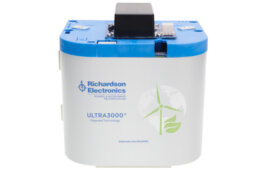Renewable energy sources accounted for nearly 20% of net domestic electrical generation during the first half of 2018, narrowly surpassing that provided by nuclear power, according to a SUN DAY Campaign analysis of just-released data from the U.S. Energy Information Administration (EIA).

The latest issue of EIA’s “Electric Power Monthly” was released on August 24, 2018. For the data cited in this news update, click here as well as here.
Each accounted for almost one-fifth of the nation’s electrical generation: renewables for 19.867% and nuclear power for 19.863%.
In addition, the latest issue of EIA’s “Electric Power Monthly” (with data through June 30, 2018) reveals that wind and solar both showed strong growth with wind by 11.2% and solar (i.e., utility-scale and distributed PV) expanding by 27.6% compared to the first half of 2017. Combined, they accounted for nearly a tenth (i.e., 9.9%: wind-7.5%, solar-2.4%) of the nation’s electrical generation.
Small increases were also reported by EIA for geothermal and biomass — 1.0% and 0.8% respectively. Combined, non-hydro renewables grew by 12.2%. However, a 7.1% drop in hydropower output netted an increase of only 3.6% for all renewables in the first half of 2018 compared to the same period in 2017.
That modest gain, though, continued to close the gap between renewables and coal with the latter dropping by 5.6%; renewables now provide nearly three-quarters (i.e., 74.3%) as much electricity as does coal. In fact, electrical generation by all fossil fuels (i.e., coal, gas, oil) combined was just 60.0% for the first half of 2018 while barely five years earlier, utility-scale fossil fuels accounted for nearly 70% (i.e., 68.6% at the end of 2012).
The change is mostly attributable to the growth in domestic electrical production by renewable energy sources.
Filed Under: News



